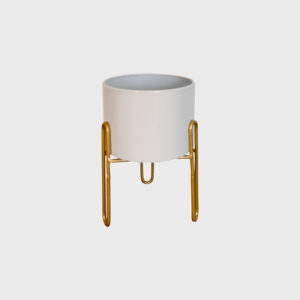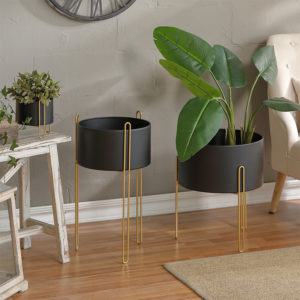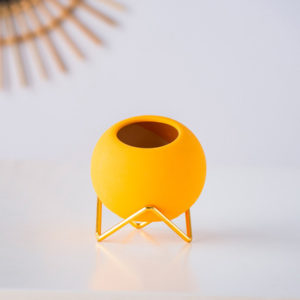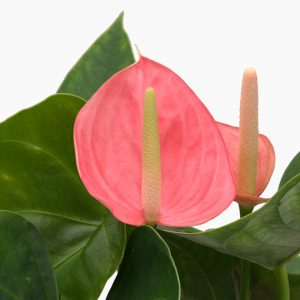
#Thejunglecollective!
Gardening in small spaces can be a delightful challenge, especially when dealing with shaded areas. Many believe that a shade garden lacks the vibrancy and variety of one bathed in full sun, but this couldn’t be further from the truth. With careful selection and proper care, shade-loving plants can create a lush, beautiful oasis even in the smallest gardens.
Understanding Shade Conditions
Before diving into plant selection, it’s essential to understand the different types of shade:
Full Shade: No direct sunlight, often found under dense tree canopies.
Partial Shade: Receives direct sunlight for a few hours, typically in the morning or late afternoon.
Dappled Shade: Sunlight filtered through tree leaves, creating a pattern of light and shadow.
Each type of shade influences the kinds of plants that will thrive in your garden.
Key Considerations for Shade Gardens
Soil Quality: Most shade-loving plants prefer rich, well-drained soil. Amending your garden with compost or organic matter can improve soil texture and fertility.
Watering: Regular watering is crucial, especially for newly planted gardens. However, be mindful of overwatering as it can lead to root rot.
Plant Selection: Choosing the right plants ensures a vibrant and dynamic garden throughout the seasons.
Top Shade-Loving Plants for Small Gardens
1. Hostas (Hosta spp.)
Hostas are a shade garden staple, known for their lush foliage and variety of leaf shapes and colors. These perennials come in a range of sizes, making them perfect for small spaces. Their leaves can be heart-shaped, oval, or lanceolate, and they vary in color from deep green to blue-gray, often with variegated patterns. Hostas bloom in early summer with tall spikes of lavender or white flowers.
2. Christmas Rose (Helleborus niger)
The Christmas Rose is a perennial favorite in shade gardens. Blooming in late winter to early spring, its white or pinkish-red flowers bring a splash of color when little else is in bloom. This plant thrives in partial to full shade and prefers well-drained, rich soil. Its evergreen foliage adds year-round interest to the garden.
3. Japanese Forest Grass (Hakonechloa macra)
For adding texture and movement to a shade garden, Japanese Forest Grass is an excellent choice. Its arching stems and graceful, flowing habit create a soft, elegant look. This grass thrives in partial to full shade and prefers moist, well-drained soil. The golden or variegated varieties can brighten darker areas.
4. Astilbe (Astilbe spp.)
Astilbes are known for their feathery plumes of flowers that bloom in early summer. These perennials prefer rich, moist soil and can thrive in partial to full shade. Astilbes come in a range of colors, including white, pink, red, and purple, adding a splash of color to shaded areas. Their fern-like foliage is also attractive when not in bloom.
5. Heuchera (Heuchera spp.)
Commonly known as Coral Bells, Heucheras are valued for their vibrant foliage that comes in shades of green, burgundy, silver, and even pink. They are excellent for adding color and texture to a shade garden. Heucheras prefer partial shade and well-drained soil, making them suitable for small garden spaces.
6. Ferns
Ferns are quintessential shade plants, thriving in full to partial shade and adding a lush, tropical feel to the garden. Varieties such as the Japanese Painted Fern (Athyrium niponicum) and the Maidenhair Fern (Adiantum spp.) are particularly striking. Ferns prefer consistently moist, well-drained soil enriched with organic matter.
7. Bleeding Heart (Dicentra spectabilis)
The Bleeding Heart is known for its heart-shaped pink or white flowers that dangle from arching stems. Blooming in early spring, this plant prefers partial to full shade and rich, well-drained soil. Its delicate, fern-like foliage adds texture to the garden after the flowers have faded.
8. Lungwort (Pulmonaria spp.)
Lungworts are early spring bloomers with spotted or variegated foliage and clusters of small, funnel-shaped flowers in shades of blue, pink, or white. These plants thrive in partial to full shade and prefer rich, moist soil. Their unique foliage provides interest throughout the growing season.
9. Toad Lily (Tricyrtis spp.)
Toad Lilies are prized for their orchid-like flowers that bloom in late summer to early fall. These plants thrive in partial to full shade and prefer rich, moist, well-drained soil. The flowers come in shades of white, pink, and purple, often speckled with darker spots, adding a touch of exotic beauty to the garden.
Creating a Balanced Shade Garden
To achieve a balanced and visually appealing shade garden, consider the following tips:
- Layering: Plant in layers, with taller plants at the back and shorter ones at the front. This creates depth and allows each plant to shine.
- Texture and Color: Mix plants with different textures and colors to add interest. For example, combine the large, bold leaves of Hostas with the delicate fronds of Ferns.
- Seasonal Interest: Choose plants that provide interest in different seasons. Early spring bloomers like Lungwort and Bleeding Heart can be followed by summer bloomers like Astilbe and Hostas.
- Containers: Use containers to add height and mobility to your garden. Container gardening is an excellent way to maximize space and experiment with different plant combinations.
Maintaining Your Shade Garden
- Mulching: Apply a layer of mulch to retain moisture, suppress weeds, and improve soil quality. Organic mulches like bark chips or compost are ideal.
- Watering: Consistent watering is key, especially during dry periods. Most shade-loving plants prefer moist soil, but good drainage is essential to prevent waterlogging.
- Fertilizing: Use a balanced, slow-release fertilizer in early spring to provide nutrients throughout the growing season. Be cautious with fertilizing, as too much can lead to lush foliage at the expense of flowers.
- Pruning and Deadheading: Remove spent flowers and dead leaves to encourage new growth and maintain a tidy appearance. Pruning also helps to control the size and shape of your plants, which is crucial in small gardens.
Creating a lush and vibrant shade garden in a small space is entirely possible with the right plant selection and care. By understanding your garden’s specific shade conditions and choosing plants that thrive in those conditions, you can transform even the shadiest corner into a beautiful retreat. Embrace the variety and unique beauty of shade-loving plants, and enjoy the serene, verdant haven you create.
If you want more information about caring for indoor and outdoor plants, check out our shop for a wide selection of both plants and planters.






















